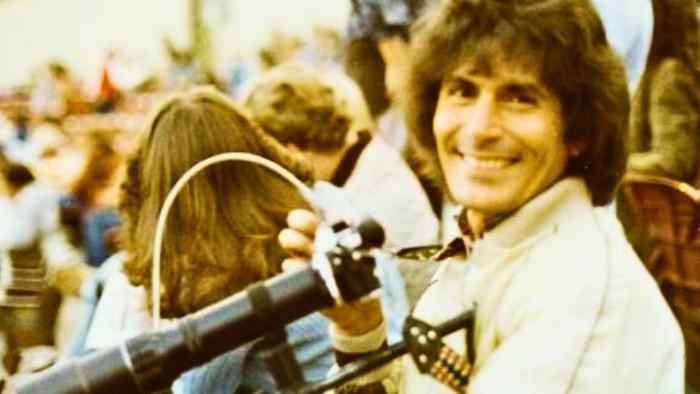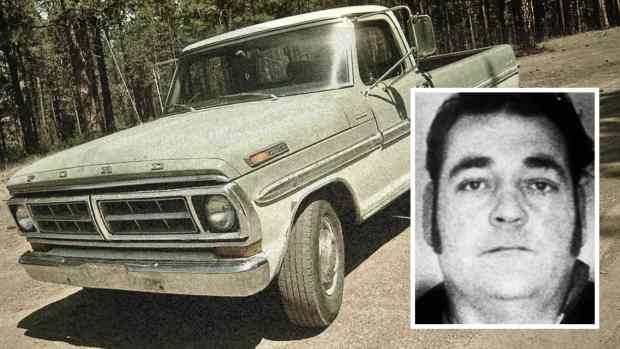Rodney Alcala: Dating Game Serial Killer's Secret Photographs

Police believe Rodney James Alcala may have murdered as many as 130 victims during the 1960s and 1970s.
Rodney James Alcala was a sex offender and serial killer who police suspect killed as many as 130 victims during the late 1960s and '70s.
Alcala died from natural causes in a California prison at age 77 on July 24, 2021. Despite his death, police continue to investigate his crimes and his stash of thousands of photographs.
Huntington Beach Police Department says they identified at least 21 women from his photo archive but still have over 100 women and several young men who remain unidentified.
Alcala was an aspiring photographer with good looks and a high IQ, which helped him lure his victims. He took more than 1,000 explicit photographs of young women, teenage girls, and boys.
In 2016, he was charged with the 1977 murder of a young woman identified in one of his photos. Alcala assaulted another woman who was his photo subject, and police think that many more could be victims of rape and murder.
Some compare Alcala to Ted Bundy; one investigator called him a “killing machine.”
He is sometimes referred to as the “Dating Game Killer” because he appeared on the popular television show The Dating Game amid his killing sprees.
The best time is at night. [Morning and afternoon] are okay, but nighttime is when it really gets good. Then you are really, really ready.
— Rodney Alcala on The Dating Game
Who Was Rodney Alcala?
Rodney James Alcala was born Rodrigo Jacques Alcala Buquor on July 24, 1943, in San Antonio, Texas.
He was the third of four children born to Raul Alcala Buquor and Anna Maria Gutierrez. Alcala’s father moved the family to Mexico in 1951, leaving them three years later and causing extreme abandonment issues in Rodney. In 1954, his mother returned to the U.S. with Alcala and his two sisters, landing in suburban Los Angeles.
Alcala was a remarkable student and popular with other classmates. Before graduating from Montebello High School, he attended several private schools. He served on the yearbook planning committee and the cross country and track teams.
In 1961, at age 17, Alcala joined the United States Army to train as a paratrooper. He served as a clerk and was not popular with his commanding officer, who said he was insubordinate, manipulative, and vindictive. Alcala received discipline numerous times for assaulting women while in the Army.
In 1964, Alcala mentally broke down and deserted the Army, going AWOL, hitchhiking from the base in Fort Bragg, North Carolina, to his mother’s residence in California. A military psychiatrist examined Alcala and diagnosed him with antisocial personality disorder and said he had an IQ of 135. He was discharged from the Army shortly after that.
After being dismissed from his military service, Alcala attended California State University, then transferred and graduated from the UCLA School of Fine Arts. He then attended New York University and studied film under famous film director Roman Polanski. Roman Polanski was best known for his arrest in 1977 for drugging and raping a 13-year-old girl.
Later in life, psychiatric experts at his trials diagnosed Alcala with borderline personality disorder, malignant narcissism with psychopathy and sexual sadism comorbidities, and narcissistic personality disorder.
First Known Crime
On September 5, 1968, a driver named Donald Hines witnessed Alcala lure Tali Shapiro, 8, into his vehicle as she walked to school. Shapiro lived in the Chateau Marmont, and Alcala pulled up beside Tali while she walked on Hollywood’s Sunset Boulevard and asked her if she needed a ride.
Ali initially said no, but she got into the vehicle when he told her he knew her parents. Alcala took Tali to his Hollywood apartment, where he told her he wanted to show her a picture.
He then raped and beat Tali with a steel bar. By the time police arrived at the apartment, Alcala was gone. Tali was in a coma for 32 days and spent months trying to recover from the brutality.

Tali Shapiro in 2023 and as a young girl (inset). In 1968, she was raped and beaten by Rodney Alcala when she was only eight years old.
On the Run
Alcala went on the run in 1968 and landed in New York. He enrolled at New York University under the alias “John Berger” and studied under Polanski.
Adding to the intrigue, Alcala also found himself working for the Blue Cross Blue Shield Association, alongside none other than Richard Cottingham, the infamous Torso Killer, but no evidence has ever linked them. In 1971, Alcala, still under the radar, secured a job at a New Hampshire art camp for children, this time using the alias “John Burger.”
Cornelia Crilley
On June 12, 1971, Cornelia Crilley, 23, was found in her Manhattan apartment. She had been raped and murdered. A Trans World Airlines flight attendant, Crilley had been moving into her apartment at 427 East 83rd Street.
Crilley had moved out of her family’s home about a year before graduating from the TWA stewardess school in Kansas City. She had shared several apartments in Manhattan with other girls before moving out into her place.
Police theorized that Crilley either hired someone to help move her or accepted Alcala's help moving furniture. Since the windows and doors of the apartment showed no forcible entry, police speculated that the killer used her key to lock the door behind him.
The murderer used Crilley's stockings to strangle her. Clothing had been shoved inside her mouth, and she had been sexually assaulted.
A friend of Crilley's, Leon Borstein, an assistant district attorney, contacted the New York City Police Department (NYPD). He said he had been unable to reach her and found her apartment locked. Her death shook the community, and it would be decades before it would be solved.
In 2010, new DNA technology finally solved the case, linking it to Rodney Alcala. Crilley's father died in 1980, and her mother passed in 1995, never knowing who killed their precious daughter.
Arrests
In early 1971, the Federal Bureau of Investigation (FBI) added Alcala to its list of the Ten Most Wanted Fugitives for the abduction of Ali Shapiro. Alcala was tracked down and arrested, then extradited to California.
Shapiro’s family had relocated to Mexico and refused to allow her to testify. Since the primary witness would not be testifying at trial, authorities declined to charge him with rape and attempted murder. Instead, they charged them with child molestation, and he received a three-year sentence. Alcala was paroled in 1974.
He was arrested again a few months later for assaulting a 13-year-old girl referred to as “Julie J.” in court records. Sadly, she had accepted a ride to school. Alcala served another two years and was paroled in 1976.
Ellen Hover
Following Alcala’s release in Los Angeles, his probation officer permitted Alcala to travel to New York City despite his history as a flight risk.
A week after arriving in New York, police believe Alcala murdered heiress Ellen Jane Hover, 23. Ellen was the daughter of the famed nightclub owner Herman Hover and the goddaughter of performers Dean Martin and Sammy Davis, Jr.
Hover was a gifted pianist and biology major who planned to attend medical school. Her best friend Nina called her "Flover," which meant "Flower Power" combined with her last name. She had just broken up with her long-term boyfriend and was said to be sorting things out when she met Alcala.
Hover was last seen at her apartment in New York City on July 15, 1977. Hover's planner showed she had an appointment that day with "John Berger."
Alcala had been pressuring Hover to go to lunch with him. All she knew was that he was a photographer with a fine arts degree from UCLA, studied under Roman Polanski, was good-looking, and had a near-genius IQ. As fate would have it, he was also a serial killer.
Recommended
The case went cold fast, and later, in 1977, the FBI received a tip about Alcala's arrest for Shapiro in New Hampshire. Agents questioned him, and he admitted to knowing Hover, but no arrest could be made because she was still missing.
Hover's remains were eventually located on the John D. Rockefeller estate in Westchester County, buried under heavy rocks on a hill that overlooked the Hudson River. An aspiring model would later report to police that "John Berger" had done a photo shoot with her in the same area. Though Alcala was on the police radar, they didn't have enough evidence to make an arrest.
Return to California
In 1978, Alcala returned to Los Angeles and briefly worked as a typesetter at the Los Angeles Times. During this time, Alcala convinced hundreds of women and young men that he was a professional photographer and added their pictures to his portfolio.




